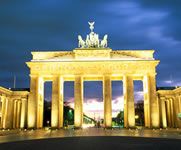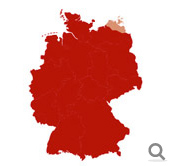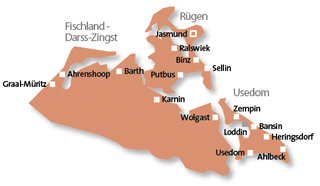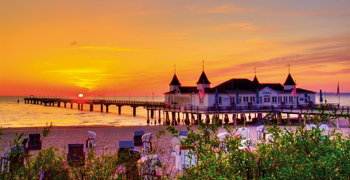
Historical Towns
- Historical towns in Brandenburg
- Cathedral Towns and Cities in Saxony-Anhalt
- The innovative Anhalt-Wittenberg Region
- Enchanting towns in the Harz
- The beautiful towns and cities in Saxony
- Towns and cities of culture in Thuringia
- Beautiful towns of Franconia
- East Bavarian traditional towns
- Alpine towns in the Allg�u
- The eastern Akpine Foothills and their towns
- Towns and villages in the western foothills of the Alps
- Mediterranean towns on Lake Constance
- Towns in the Swabian Alb
- Unspoilt towns in the Black Forest
- Towns for refined tastes in the Heilbronner Land
- Towns in the Odenwald
- Wine towns in Rheinhessen
- Saarland, a region of contrasts
- Romantic towns in the Hunsr�ck and Nahe Regions
- Idyllic towns and villages in the Moselle Region
- The Ahr Rhine Eifel holiday region
- Wine towns on the Romantic Rhine
- Modern towns and cities in the Bergisches Land Region
- The Lahn Valley and its fairytale towns
- Historical towns in Kurhessisches Bergland
- Sauerland's scenic towns
- Fairytale towns in the Weserbergland Hills
- Majestic towns in the M�nsterland Region
- The nine stars of Lower Saxony
- North and East Frisian Islands
- Vibrant Schleswig-Holstein
- Maritime towns along Mecklenburg's Baltic Coast
- Historical Hanseatic Towns
- Germany's Baltic Sea Islands
- The Mecklenburg Lakes
Contact and information
Usedom Tourismus GmbH
www.usedom.de
Tourismusverband Fischland-Darss-Zingst e.V.
www.fischland-darss-zingst.de
Tourismuszentrale Rügen GmbH
www.ruegen.de
www.usedom.de
Tourismusverband Fischland-Darss-Zingst e.V.
www.fischland-darss-zingst.de
Tourismuszentrale Rügen GmbH
www.ruegen.de
Chalk cliffs and artists' colonies the noble grandeur of the seaside resorts

Usedom
The three imperial resorts of Ahlbeck, Heringsdorf and Bansin were favourite holiday destinations of Kaiser Wilhelm II of Germany. These grand old seaside towns share a distinguished past and are linked by Europe's longest beach promenade which stretches for 8.5 kilometres. Nowadays you're as likely to see cyclists as walkers using this charming waterfront way. Lovingly restored seaside villa hotels from Germany's industrial heyday in the 19th century are signature features of the three resorts, and no holiday is complete without visiting the historical piers. The longest of these in Heringsdorf extends 508 metres into the sea, perfect for romantic evening strolls. Little more than a stone's throw from here in Ahlbeck is Germany's oldest pier (1898).Zempin, Koserow, Loddin and Ückeritz are tiny resort villages which follow one after another in the narrowest part of the island. Along these stretches of coastline you might be lucky enough to find a piece of amber, the gold of the sea. Further north there are museums to discover in Peenemünde, while the Baltic resorts of Karlshagen, Trassenheide and Zinnowitz are home to Europe's largest butterfly farm, a diving capsule and a topsyturvy crazy house. Usedom Island is outlined by a sandy beach that runs for 42 kilometres.
The Peenestrom strait separates the island from the mainland. On its western shore lies Wolgast, which served as a ducal residence for Usedom towards the end of the 13th century. St. Peter's Gothic basilica dates back to this period. The bridge over the Peenestrom strait, Germany's largest bascule bridge, is a monument from more recent times.
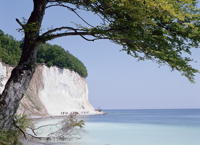
Rügen
Most people associate Rügen with the dramatic chalk cliffs that form the northern crest of the island. The Königsstuhl, which towers 118 metres over the sea, is the highest point of this remarkable range in Jasmund National Park. Every year the locals pay homage to the famous pirate Störtebeker with a festival in his name at Ralswiek open-air theatre. Despite the high seas robbery that he and his men engaged in, Klaus Störtebeker has retained the stature of a Robin Hood figure who stole from the rich and gave to the poor.Anyone with an interest in old-fashioned steam engines should acquire a ticket for the Racing Roland historical railway. Many of its carriages and engines have been in operation for hundreds of years. The narrowgauge railway chugs across the south-east of the island.
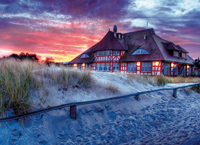
Fischland-Darss-Zingst
Germany's prettiest peninsula is best known for the West-Pomeranian Boddenlandschaft National Park, but there are many more scenic highlights to discover including miles and miles of sandy beaches. Along the Fischland-Darss-Zingst coastline are 60 kilometres of fine, white, pebble-free sand stretching as far as the eye can see, which equals seaside fun for all the family. The western strand in Darss, located in the national park, has an unspoilt, dramatic character with trees twisted into bizarre shapes by the winds. Recommended excursions include the Darsser Ort, one of the oldest lighthouses still in operation, and Ahrenshoop artists' colony, which was founded in the late 19th century. In the artists' houses and studios, present-day talents are capturing nuances of landscape and light in much the same way as the original painters, led by Paul Müller- Kaempff. Inspired by the scenery, the people and the creative, intellectual atmosphere, they created world-famous works of art and made major advances in the field of painting. The Baltic Sea health resort of Zingst has risen to fame in recent years for its blossoming photography scene. Its four photo galleries regularly welcome big-name exhibitions. Zingst also plays host to an extraordinary natural spectacle: thousands of cranes arrive in spring, and in even greater numbers in autumn, to transform part of the national park into a sea of migratory birds.Fresh fish and cold beer
Fish and seafood enjoy top billing on menus along the Baltic coast. Locally caught pikeperch are a particular favourite. Herring also enjoys great popularity as a regional speciality and is served in traditional taverns and gourmet restaurants. May on Rügen is the season of the garfish, which swim along the coast in droves before landing on the tables of the island's best restaurants. Mecklenburg stuffed ribs are the delicacy of choice in Fischland. Götterspeise, a jelly desert, lives up to its name as the `food of the gods'.Travel Planner
Select an option...
Romance and charm
The Achterland on Usedom with its many lakes and broad reed beds is a dream destination for romantics, anglers and cyclists. Boats are moored idyllically on its shores and the picturesque fishing villages abound with thatched roofs.
Food and drink
Schlösschen Sundische Wiese, which boasts a secluded location in the heart of the West- Pomeranian Boddenlandschaft National Park, offers outstanding cuisine and a place to stay for visitors to the Baltic Sea health resort of Zingst.
History and tradition
The Fischland-Darss-Zingst peninsula has a fine maritime past, with trips on the Zeesenboote among its most cherished traditions. During the holiday season, sightseeing tours on these traditional fishing boats run daily in the Saaler Bodden bay.
Nature and scenery
Every autumn, thousands of cranes gather on the Bodden meadows in western Rügen as part of their journey south to their winter homes. Marvelling at the swarms of cranes is something that everyone can enjoy an unforgettable natural phenomenon.




